In my mind, the love of board games has much in common with the love of books or films. From time to time I find a title that captures some little nook of my imagination and I get curious. I want to know about the author, the backstory, the trivia. I want to explore the catalog and get to know the creator.
Two years ago, my kids and I discovered Wizards of the Wild from Adam West, which he published under his own company, Crosscut Games. Wizards is the sort of game I love, a small box that tells an unusual story and delivers a rich thematic experience. I’ve only recently started tracking my plays, but I can say with certainty that these woodland critters are a Top 5 play in our house when it comes to time and frequency on the table.
This being the case, I am thrilled to be joined by Adam West. He is not Batman. Nor is he the mayor of Quahog. But he is the designer of some wonderful games, including Transmissions, a highly anticipated rondel worker placement game coming out this year.
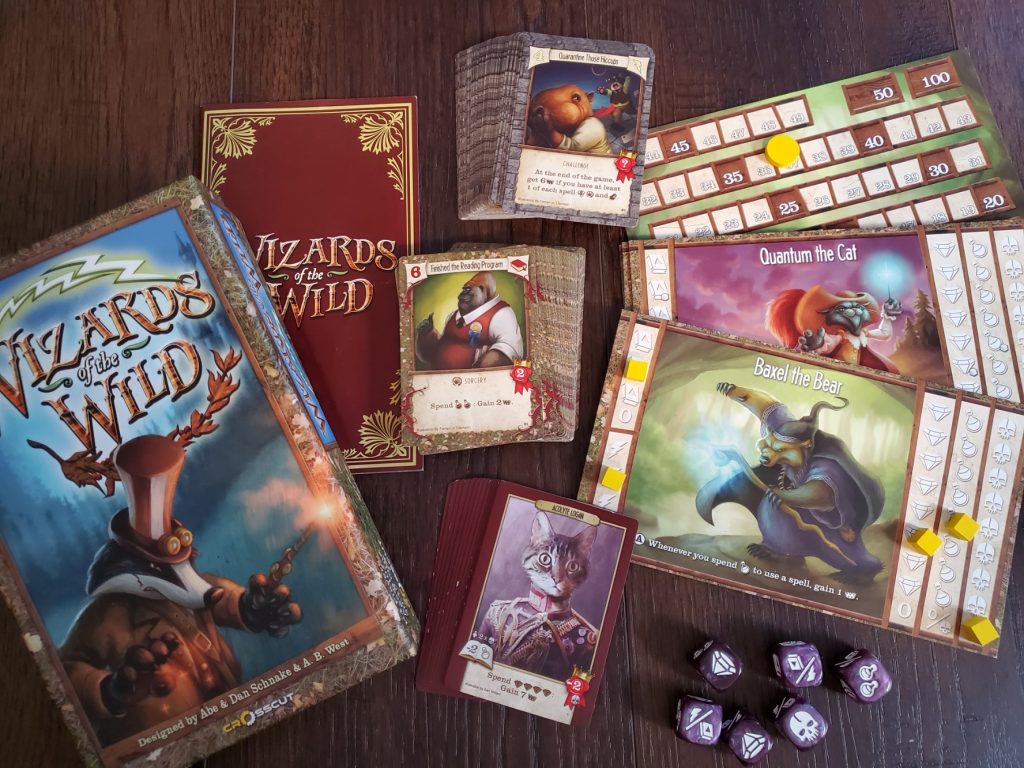
Adam, thank you for taking the time for a conversation. Your designs have been out in the wild for over a decade now. You’ve worked with publishers and self-published. You’ve designed and even re-designed some of your titles utilizing a broad swath of themes and mechanics. You write about games and design. You seem to have established a rhythm and a presence in this hobby. For those who may not know you, how would you describe your niche in the tabletop industry?
I believe the tabletop industry is made up of many just like me: individuals who love games so much they have to talk about them and just be in the space. Game design and development is a hobby for me as I have never made any reasonable amount of money and until recently, I had a full time job that paid the bills. Now I’m retired, so I hope to have more time for the hobby I love. But honestly, I’m still figuring out what my niche truly is! So far, I’ve been a huge game evangelist – I’ve brought many into the hobby over the years as I just love to introduce people to what games are really about. I love games and I love all types of games. I think my designs reflect that. I’m eclectic! But being eclectic means I don’t have a very clear brand. I’m thinking more about that these days.
You seem to write a lot. I’ve come to enjoy keeping an eye on your BGG blog. Have you found that to be a good source of connection with the gaming world?
It is, yes. Mainly I write to get my thoughts out and to see what others are thinking. Many of my blog entries are about Kickstarter, conventions, game design, brief thoughts—just me rambling out loud about gaming in whatever form it takes. BGG is such a huge place with all kinds of gamers—something I’m still coming to grips with. I find at times I match up close with BGG and other times I don’t feel like anyone else! And I admire game reviewers who know why they like games and why they don’t. I’m still figuring that out for myself.
You wrote two monstrous fun pieces recently: one in which you talked about the BGG Top 100, and another in which you rated every game that released in 2021. I won’t ask for a recap, but I am prompted to ask if you could name a handful of titles that have been hot in your rotation lately and talk about why?
My main gaming partner is my wife – so games that play with two are some of my favorites. We adore Jaipur, which I feel just fits us extremely well. Azul and Nova Luna—both are excellent. It’s important for a two player game to feel balanced between both of us—one of us will win, and then the next game, the other will win. Azul feels nearly perfect to me as a game design. We’ve also been enjoying a variety of roll-and-writes—just got Three Sisters and played it three times in one sitting! That’s a really good one. Love the theme and the variety of popping and cascading results—everything seems to pay off.
With my gaming friends, of which I’ve been blessed with many, there are a few we keep coming back to. One of my friends loves Urban Sprawl which BGG isn’t quite as fond of, but as a 3-player game, it’s really fun. Whenever we have just 3 of us, this one tends to come out. I don’t have a better city builder and this one hits all of the notes: a city unfolds, it feels competitive but not hateful, and you have to navigate a fair amount of randomness.

Otherwise, we’re exploring the latest we have in our collections—cult of the new for me is just fine. I like learning new games! I’ve played Jaws of the Lion a dozen times recently because one of my friends also just retired, so we can play during the week. But I also go back to oldies: I still want to play Die Macher a few more times. It’s really terrific. And my wife wants to go back to Puerto Rico again!
For casual play, I’ve gotten many family weight games into my collection over the past several years. When we travel to visit family, I’m almost always asked to bring some games and I have a few dozen to choose from now. I’ve recently enjoyed Cape May—so pretty and clever and easy. But I often bring out Llama, Qwix, Century Golem and now Llamaland. So my plays are very often these lighter, family-style games and not the heavier games. And yet, once in a while I pull out something really heavy—like Paths of Glory. I have deep feelings for a great wargame. That goes way back with me.
Let’s talk about your upcoming title. Transmissions was a smash hit on Kickstarter last spring with over 4,000 backers. What do you think set this design apart from the others in your catalog?
It’s the art. Those robots are adorable and I knew that when I first saw them. They had to be miniatures! I was afraid that a simpler game would not work on Kickstarter and wrote a blog about that thought. Turns out simple games do work on KS, but they have to be really attractive and very clear—easy to understand and explain. I really tried to make Transmissions very easy to play and approachable so people would want to pull it off the shelf. That was tested recently as I had my nephew and his wife over and had no idea what kind of games they might like. And she walked over to my shelf and pulled Transmissions out first! She had no idea I was the designer. That made me feel really great. I also tried to make it a bit interesting for gamers, however, giving it at least one or two original ideas. I hope that comes through as well. Personally, my wife and I really like playing it and I think that’s great. It’s done very well so far, but we’ll see how BGG feels!
(Check out the Transmissions Insert Unboxing for a glimpse of the components!)
Is this your favorite design so far? Is that even a fair question?
I know some say it’s like choosing your favorite child: it changes depending on the day! But yes, Transmissions is one of my favorites. I like something about each of my designs and try to respect where I was when I worked on the idea. Like my first published game Galactic Emperor—I was just imitating what I saw around me in a 4X setting. It has some interesting thoughts and was an accomplishment to print, but I think I’m a better designer now. I try to improve with each design and be more deliberate about what works. And I’m constantly researching games—how they work, what makes them special, what are the mechanics really doing. I’m digging deeper and deeper and being more deliberate in my design choices. Hopefully, my next game will be my new favorite!
If you would, speak for a minute on your collaboration with Matt Dixon, whose artwork is so beautifully integrated into the game. How did your paths cross?
My youngest daughter had Matt’s picture as the wallpaper on her phone. She was changing it every month to fit the season and was showing me. Well, I fell instantly in love with it and reached out to Matt via e-mail. I said I was a game designer and would he be interested in me designing a game using his robots. And he said “No”. Matt’s incredibly busy as a professional—he works on Hearthstone for example. He also said Transmissions was very personal to him and didn’t want them to appear anywhere else but in his own personal drawings.
It took me a year of back and forth with him to convince him I could do it. I bought all his illustration books on Transmissions and wrote back to him what I thought was happening in his world—how he used birds and nature, how the robots were always by themselves, how they imitated humans but in a way that they didn’t understand. I produced a YouTube video of my prototype and sent it to him. Then there was silence for a couple of months. I wrote a final e-mail saying basically I understand he doesn’t want to do this and it’s ok. That’s when he wrote back and said, yes, he’d do it. Amazing! Once he committed, he leaned into it 100%. Matt is so generous and wonderful to work with. Now we’re good, professional friends, corresponding every few weeks. I’m trying to convince him to do another game with me, so we’ll see!
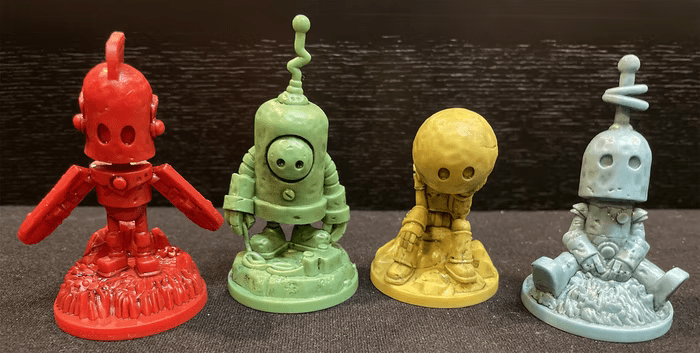
I’m so glad the collaboration came together! Obviously a fun part of this campaign (as a backer) was the inclusion of those gorgeous minis. Did the aesthetic focus present any new challenges for you in the process?
These were the first true sculpts I had to produce and I’m so glad I found Chad Hoverter through a mutual game designer friend. Chad is the best in the industry, I believe, and wow did he do great work for me! Miniatures are really difficult to do and probably most don’t appreciate the complexities. You need to be careful how the sculpture is put together. You have to watch for undercuts, and complex details that won’t read well in the mold. You have to decide on multipart molds or clamshell. You have to pick out the right plastics and colors. Size matters too, of course. How thin a part is here or there also adds to it: pieces can break off! You have to hollow out the interior or it won’t mold right. And then there’s the ink wash in Transmissions. Tons of details. So really challenging, but hard work pays off.
How would you describe the relationship between artwork and design in tabletop games? Do you feel any of your other titles achieved a better balance than Transmissions?
Artwork is incredibly important in a game being successful and I include graphic design as well, not just the illustrations. I tried to use only graphic design (and a wild version at that!) in one of my games (Empire of the Stars) and it just didn’t do as well. The box cover was amazing, but at the time, I just couldn’t afford to do full illustrations. So that’s probably my least successful. Transmissions had adorable and very consistent artwork and has been my most successful. So in terms of reaching an audience, I think artwork is essential.
Artwork is the loudest part of communication of the game to players—I think that is what brings someone to the table or turns them away. Illustrations and graphic design need to be cohesive so there is clarity—and especially on what is happening in the game and how you play. I think of the reworking of Brass with its very dark and muddy illustrations. Certainly that represents the theme and setting of the game, but it hampers game play because clarity is sacrificed. It’s still a great game, however!
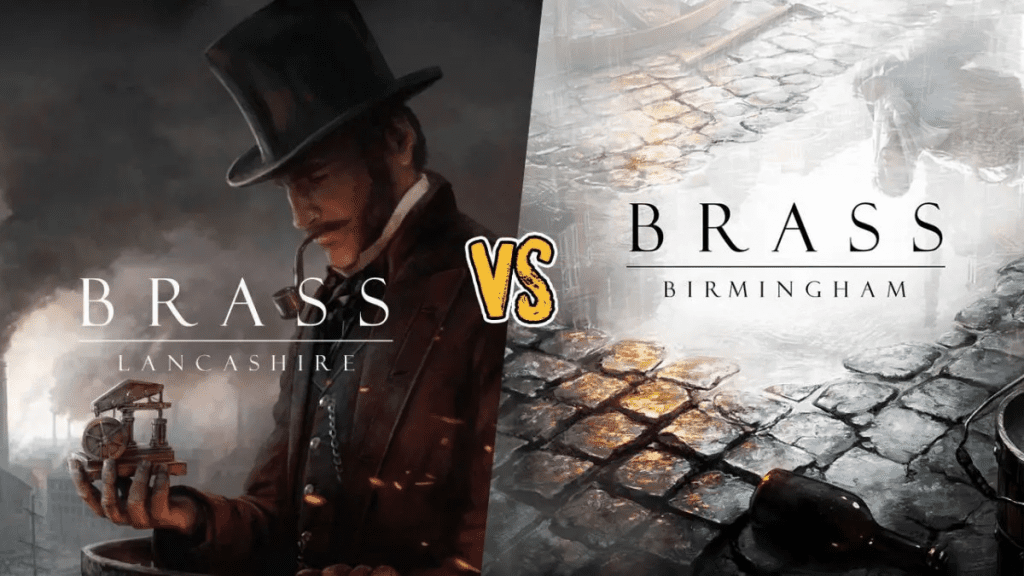
Then I think of Vincent Dutrait and Michael Menzel—some of our best in pleasing and realistic illustrations. And Ian O’Toole who is just so prolific and amazing in how he makes a game better with his approach. I’ve been fortunate myself to work with some of the best illustrators – Ninjato was Drew Baker, Deadline was Glen Orbik. Deadline really captured the theme perfectly. Those games were mainly successful because of the illustrations. In graphic design, I’ve worked exclusively with Peter Gifford when I’m not doing it myself. He’s one of the most under-appreciated graphic designers in our industry. He’s so good and can adapt to so many styles. He has always produced the very best work for me. And he’s a true gamer as well!
Balance between artwork and the game, I guess, means: Does the setting or theme represented in the artwork create an integrated whole with the mechanisms in the game? Transmissions was driven by the art—the mechanisms were a result of thinking about the art and trying to keep the game approachable, but still engaging. It’s also based on my experience with family weight games. So it is, I think, my best work at balance: the illustrations and the mechanisms were built together. Ninjato would be second as the card play does deliver a ninja feeling I believe.
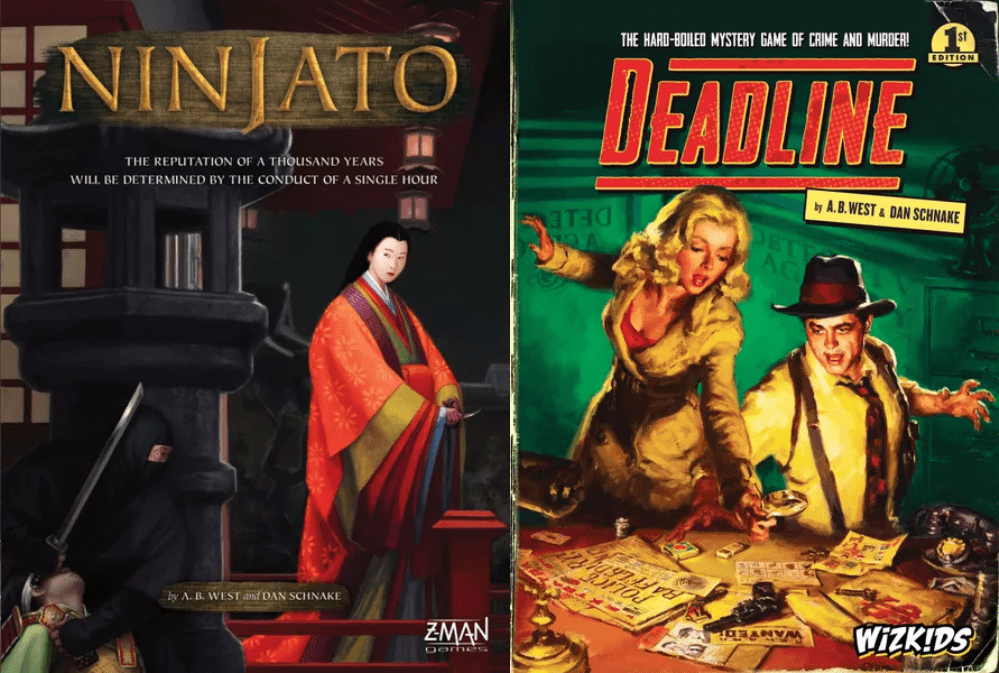
Getting back to Transmissions, I’m sure the fulfillment of such a large project in the midst of the current shipping climate has been challenging. Does it keep you up at night?
I sleep well, but it is brutal out there! The complexities are astonishing. And it isn’t just the shipping woes (prices are roughly double from a year ago in my experience) which is certainly enough! It’s also all the regulatory issues going on in trade today. I’d really like to hear more from other publishers on how they are navigating these complexities of VAT tax issues in the UK and the EU. I’m having a terrible time with it. I want to stay in compliance, but every country is different. And there are regular reports and fees to pay—even if you aren’t shipping anything! So for a small guy like me, it’s destroying any sense of profit. I’m losing money everywhere these days and it’s because of shipping and fulfillment.
You mentioned on your blog that you’re hoping to release games a bit more frequently. Is this because you have a series of projects in the pipeline, or because you’ve developed rhythms that you believe will sustain that output?
I just want to be more regular about it. I want to be disciplined. I want to be a game designer and publisher and to make that work, you have to have product! I have several games in the works in various stages. One very nearly done, another working toward done and then a handful that are still in early stages of design—some are collecting dust too! It’s the design and development that I enjoy the most. I do the other parts because I have to and they are work! But I may have to give it all up because at the pace of shipping woes, I’m not sure I can do it as a solo act any longer. It’s just too risky and complicated. I’ll keep going this year and see if things get better. Otherwise I might retreat back to iPhone and computer games—back where I started decades ago. At least these things are easier to get into players’ hands.
One really difficult part is getting enough testing done. It used to be I could go to conventions and always find at least a few folks willing to play a handful of times. But today, it’s almost impossible. On-line testing is great and I’ve done that quite a bit. I meet at times with other designers who I know to test each other’s games. But lately, it’s been very hard to get regular testing done. It’s a critical part of development and I’m unsure how I can establish a good pace. At times, I wish there was a gathering of gamers on-line who are willing to play test. I’d love that.
As said, I recently retired (thankfully!) so I am now devoting myself more to game design and development. I spend probably 6-8 hours a day on CrossCut Games—game design, development, production, web site work, replying to questions, browsing BGG—the entire thing. I really have more ideas than time, so I hope to get ahead on the business side of CrossCut and start being very present and regular about board and card games. It’s a turning point for me, so we’ll see!
On the one hand, the barriers to entry for a small publisher seem lower than ever with the ubiquity of social media and the success of crowdfunding platforms; but there’s this two-headed monster of a pandemic and a shipping crisis casting a shadow that threatens everything. Is the landscape shifting irrevocably? Do you think some sort of new way might emerge as the dust settles on this historical moment?
I do hope things get back to relative normalcy and at a minimum the shipping situation resolves. For me, I think limiting the shipping radius would simplify things. But I am seeing signs of something new as well. The recent success of Voyages on Kickstarter as a print-and-play is an example perhaps. Of course that game was built to be a single sheet of paper and only a few games would fit that model. There has always been talk of 3D printing taking off, but it doesn’t seem like that will happen any time soon. I think something like Game Crafter is a neat idea where it is print on demand. And perhaps we’ll see more competition in manufacturing smaller runs. I think we’d all like more options for quality printing.
Let’s jump back to simpler times. Earlier you mentioned a return to the iPhone. Are you particularly fond of any former digital projects that you’d like to share? Was programming part of your vocation before retirement?
I started programming back in the early 1980’s on the Apple computer and yes, was a professional in that space my entire career. Those were really fun days—I was younger and perhaps more wildly creative. Our first game was Bronze Dragon, an ambitious CRPG, back in 1985-1987. There were three of us working on it back then. We sold that through advertising in a computer game magazine. Then we followed on with a sequel and another game that went through a publisher. But it all ran afoul when big companies moved in, and quality graphics went up faster than we could keep up given other responsibilities in life. But as I look back, those early ideas would be great to reprise on the iPhone or similar platform. My long time friend and collaborator Dan Schnake thinks we should do something for the Nintendo Switch. Access to developer tools and graphics is very easy now. Yes, competition is outrageous and I really have no idea how to get noticed. But to deliver a game, it basically takes an idea, time, and tenacity.
Before we finish up, I have to ask. Can you let us in on your next project?
I need to get Matt to agree before I say more. And I’m unsure what will be my next game: there are two possibilities. And it also depends on the state of the world. Too many variables!
For the final question, I’d like to hearken back to the beginning. You said the industry is made up of people like you. Inevitably, that includes the “next” Adam West. Given the ways you’ve explored the various facets of the industry, what advice or encouragement would you give to someone out there who thinks they have their finger on the pulse of a great design, but they’re not confident they can get the project to the masses?
Of course, many have a game idea, but you need to see if it’s a worthwhile idea to others. That means keep your nose in BGG and know all about what games are working and what people are saying. Get others to play your game—others meaning many, many others. Test it a hundred times at least – the more the better. I’d say start small. Make a free game. Give it away. Enter contests. Get your friends to play. If you have the tenacity and the commitment, you can do it. I’d steer toward print and play or small runs and keep it local rather than promise world-wide access. Forget about fame and money: just get your game into gamers’ hands!
And if you really believe in it, you have to take a risk. You have to pay money to make a good looking game. You have to be willing to lose that money too. Kickstarter and the like make it possible for anyone to go bigger. There are hundreds of successful projects each year. But to work on Kickstarter, look at what is working. Those that make it big make it big for a reason: they look good. They have a popular IP. It’s really clear what works and what doesn’t and the bar for success continues to rise!
You could also pitch to publishers, but be ready for long waits followed by rejection. The competition for their attention is huge and they are backed up for years. And before you pitch, look at that publisher closely. What kind of games do they make? You need to know them before you talk to them. Publishers are a business and they need the very best in their product line. They are understandably not easily impressed. Even if you do get picked up, it still may not work out and you almost certainly won’t make any money. So in sum: start small and work toward big.
I would love to chat longer, but I believe my questions will have to wait for our next conversation. Thank you so much for your time!
Thankfully, Adam and I have another conversation in the works for our readers at Meeple Mountain that digs more specifically into game design. For now, check out Transmissions on BoardGameGeek or peek into last year’s Kickstarter. If you’re just loving those robots, you can also check out Matt Dixon’s art book campaign, which is live until April 11 on Kickstarter. You can be sure you’ll find a review here once the project fulfillment is complete!




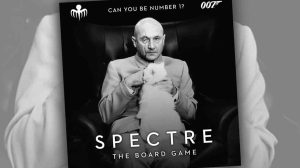

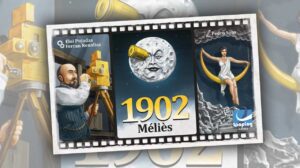




Add Comment